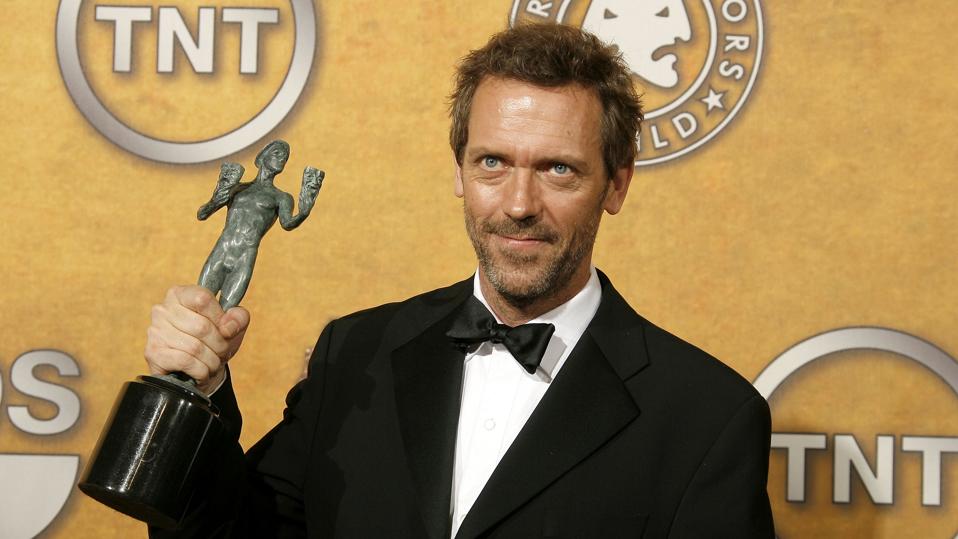
Photo by Vince Bucci
I'll admit it. I'm a medical-TV junkie, addicted to 21st-century doctor and hospital dramas (most of which are now streaming on Netflix and other services).
Although some physicians are bothered by sensationalized depictions of their profession, I appreciate these shows for what they deliver: equal parts entertainment and insight. On the one hand, medical dramas are made for our amusement. They're theatrical escapes from reality, meant to be enjoyed from comforts of a cushiony sofa. On the other hand, we can learn a lot from these shows, especially when we compare depictions of doctors today vs. 20 years ago.
From 'House' To 'Diagnosis'My love-affair with medical dramas began with House, M.D. (2004 to 2012), which centered on the eponymous antihero Dr. Gregory House, a grumpy diagnostic genius with a penchant for recreational Vicodin. Although he lies, manipulates others and breaks all the rules, his superior mind vindicates him in each episode, never failing to deliver a remarkable medical epiphany.
As CEO of The Permanente Medical Group, I sometimes thought about how I would have dealt with a brilliant but troubled physician like Dr. House. Of course, I'd try to get him help, but it's unlikely I'd have any more success than the hospital leaders on the show. Ultimately, having been responsible for the medical care of more than 5 million Kaiser Permanente members, as well as for the livelihoods of 10,000 physicians and 36,000 staff, I would have had no choice but to fire him.
In addition to House, I enjoyed all 16 seasons of Grey's Anatomy (2005 to present), a show in which the protagonists, Dr. Meredith Grey and colleagues, share much in common with Dr. House. They possess exceptional diagnostic prowess, remarkable technical skill and a whole host of psychological issues.
The physicians at the fictional Seattle Grace Hospital spend as much time carousing at the bar across the street as they do performing surgery in the operating room. Remarkably, these diversions never seem to inhibit their ability to resect an "inoperable brain tumor" or perform a death-defying cardiac procedure the next morning.
Together, these shows introduced 21st-century viewers to the on-screen motif of the "doctor as an imperfect God," with exceptional characters capable of effecting miracles and imposing self-misery.
Then came the 2019 Netflix docuseries Diagnosis (fear not: no spoilers ahead).
The show's real-life protagonist, Dr. Lisa Sanders, is a Yale MD with a temperament more akin to Mr. Rogers than a misanthropic medic. The Diagnosis creator is best known for her popular New York Times Magazine column of same name.
Like its recent TV predecessors, Diagnosis obsesses over rare diseases and near-impossible cases. Unlike House and Grey's, however, Diagnosis doesn't lean on the brilliance of a lone doctor for answers. Instead, Dr. Sanders uses her New York Times platform - and corresponding online channels - to "open source" possible diagnoses, inviting doctors and patients from all over the world to weigh in on complex medical cases.
The Doctor Is In(consequential)The debut of Diagnosis signals how much our perceptions of doctors have transformed, right before our eyes. American society no longer sees physicians as God-like figures. Quite the opposite, in fact. With a nod to TV's latest medical offering, here are four insights into how our perceptions of the medical profession are changing:
If you've ever watched one of those HGTV home-renovation shows, you understand that no one can flip a house in 60 minutes. But that's as much time as these shows have to entertain you, minus commercial breaks.
Doctor dramas are similar: What normally takes place over days, weeks or months, gets radically compressed (and dramatized) through the magic of television. The truth is, kidney failure with urine-flow cessation doesn't happen in a matter of minutes. The whites of a patient's eyes don't suddenly turn yellow when the doctor walks in the room. Medical shows must walk a fine line between being outrageous enough to hold our attention (cue the Grey's episode in which two train passengers get impaled by the same metal pole) and believable enough so that we'll care about the characters and outcomes.
Hollywood writers and producers go to great lengths to strike this balance. As a matter of fact, Dr. Lisa Sanders served as a technical adviser on House, M.D. long before she starred on Netflix's Diagnosis.
Ultimately, I believe there's truth and wisdom to be found in medical dramas and documentaries, alike. Brilliant physicians do, in fact, exist and they have the power to solve some of the planet's most complex medical enigmas. At the same time, crowd-sourcing can also help us get to the bottom of perplexing symptoms and rare diseases. Patients, like doctors, can unravel clinical mysteries.
Though I truly enjoy the medical TV genre, there's one element I find both troubling and all-too frequent across these programs.
Hollywood promises us that every medical problem has a solution, if only patients can find the "best" doctor or consult with thousands of people via the web. This notion that everything is possible may attract viewers, but it's misleading and potentially dangerous. False hope is what causes patients to chase miracle cures, deny reality and, occasionally, make the wrong decisions. I've seen it happen too many times to too many innocent families.
The truth is, patient symptoms don't always have a clear basis and, even more frequently, there aren't pills or procedures to make our problems go away. Unfortunately, admitting these truths wouldn't win you an Emmy.